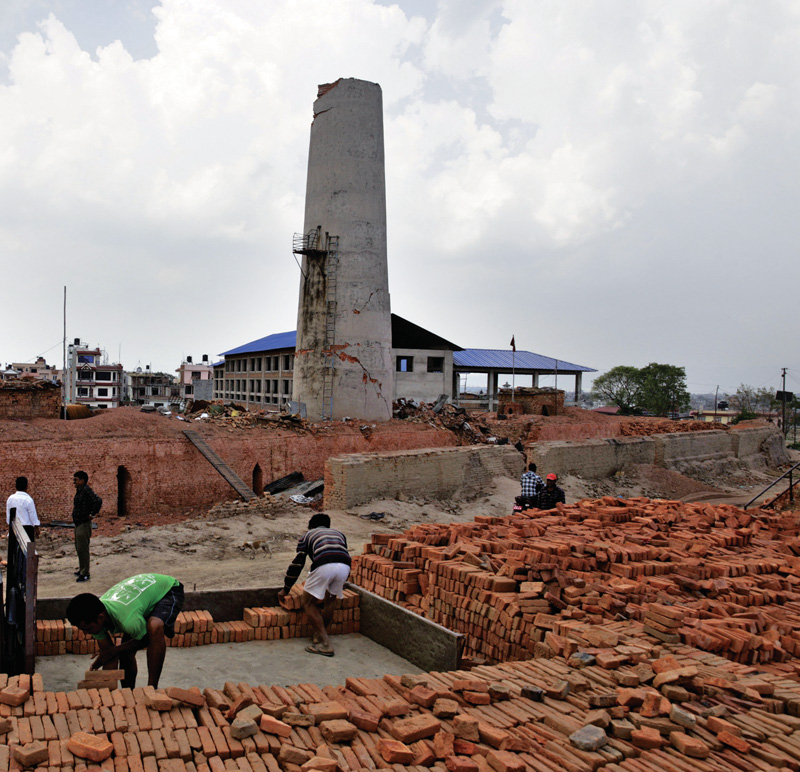Bleak demand for bricks
Kathmandu
After the government introduced new set of guidelines for the construction of buildings following the April earthquake, the number of buildings that received approval for construction has dipped significantly. As a result, the demand for bricks decline by 70 per cent as compared to the previous year owing to less construction of houses. Moreover, delay in the distribution of financial relief to the earthquake victims has also affected the construction sector.
Since majority of construction works take place in full swing during February and March, these months are regarded as peak season for the sales of bricks. However, this year with less demand, brick industry is going through a tough time.
“The industry is going through crisis with less demand of products even in peak season,” said Mahendra Bahadur Chitrakar, President of Federation of Nepal Brick Industries (FNBI). According to him, new guidelines for building construction, delay in distribution of the government’s aid to reconstruct houses and high inflation rates are the major reasons why people are not constructing houses. “The government had presumed 12 billion units of bricks would be needed for the reconstruction work,” he said, adding, “To our great surprise, we have been witnessing even lower demand than the usual one in the market.”
The production of bricks is seasonal that generally starts from December till June. According to Chitrakar, this year production of bricks was halted till January due to the blockade. As per the data of FNBI, almost all brick kilns out of 110 brick kilns in the Kathmandu valley were partially damaged during the earthquake.
“Brick industry faced huge loss as the earthquake damaged almost all brick kilns in the valley,” said Ram Kaji Awale, Proprietor of RK Itta Chimney Bhatta. “By maintaining the damaged factory, we have resumed production. However, with less demand in the market, we have got no option than piling up the bricks in stock,” he added. According to him, each brick kiln produces tentatively 3.5 million bricks every year.
According to Awale, they have witnessed 50 per cent dip in sales as compared to the last year. “Previously, around 60 per cent of our bricks used to be sold out by March but now it is confined to merely 30 per cent,” he informed.
Inflation and economic embargo had further affected the brick industry. “The cost of production jumped up by 25 per cent this year alone,” said Jitendra Khayamali, Proprietor of Shree Brahmayani Itta Udhyog. He said that they had to buy coal and diesel for the production of bricks from black market. “The current fiscal year is proved to be unlucky for the brick industry as we are facing 80 per cent decline in sales compared to last year,” he shared, adding that the business is further marred by high inflation, increased cost of production and manpower crunch. According to him, they are able to sell merely two tippers of bricks daily compared to 10 tippers per day last year.
Citing that they do not see demand from individual house owners, Khayamali said, “We are witnessing demands from schools. Earlier the major chunk of demand used to come from individual house owners.”
With less demand and high supply, the price of bricks has dipped by 20 per cent. The price of brick used to hover between Rs 12,000 to Rs 24,000 per 1000 units depending upon quality. However, now the price has gone down at around Rs 10,000 to Rs 20,000 per 1000 units.






